Themed collection New Expeditions in Polar Organometallic Chemistry

Front cover
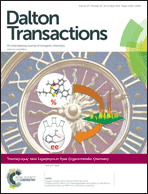
Back cover
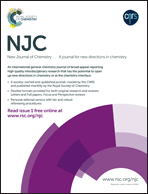
New expeditions in polar organometallic chemistry
Welcome to this themed issue of Dalton Transactions entitled “New Expeditions in Polar Organometallic Chemistry”.

Dalton Trans., 2014,43, 14179-14180
https://doi.org/10.1039/C4DT90136C
New avenues in the directed deprotometallation of aromatics: recent advances in directed cupration
Advances in directed aromatic deprotometallation are reported in the context of recent developments in our understanding of lithium cuprates.
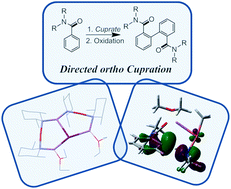
Dalton Trans., 2014,43, 14181-14203
https://doi.org/10.1039/C4DT01130A
“The Great Beauty” of organolithium chemistry: a land still worth exploring
This Frontier highlights and analyses, from the authors’ perspective, some recent selected contributions from the organolithium field with an eye towards new challenging research directions.

Dalton Trans., 2014,43, 14204-14210
https://doi.org/10.1039/C4DT01004C
Half-sandwich scandium boryl complexes bearing a silylene-linked cyclopentadienyl-amido ligand
A boryl scandium complex supported by the silylene-linked cyclopentadienyl-amido ligand was synthesized for the first time.
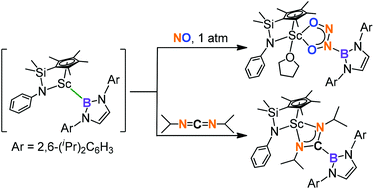
Dalton Trans., 2014,43, 14215-14218
https://doi.org/10.1039/C4DT01725K
Synthesis and molecular structure of an abnormal carbene–gallium chloride complex
The C4-lithiated N-heterocyclic carbene : BEt3 complex was synthesized by low-temperature lithiation of the N-heterocyclic carbene : BEt3 adduct, which may react with GaCl3 in THF to form the first abnormal N-heterocyclic carbene : GaCl3 complex.
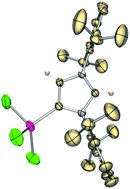
Dalton Trans., 2014,43, 14211-14214
https://doi.org/10.1039/C4DT00933A
Synthesis of N,N,O-chelate zinc and aluminum complexes and their catalysis in the ring-opening polymerization of ε-caprolactone and rac-lactide
N,N,O-Chelate zinc complexes efficiently catalyze the controlled polymerization of ε-CL and rac-LA and their copolymerization, and the aluminum complexes show good activity for the controlled polymerization of ε-CL.
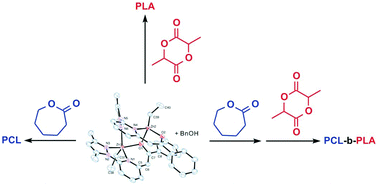
Dalton Trans., 2014,43, 14470-14480
https://doi.org/10.1039/C4DT01364F
Complexity in seemingly simple sodium magnesiate systems
Just like Grignard reagents, heteroleptic sodium magnesiate complexes can exhibit a complicated solution chemistry often giving rise to unexpected isolated products, including examples of inverse magnesiates.
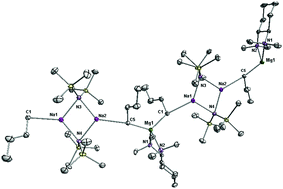
Dalton Trans., 2014,43, 14424-14431
https://doi.org/10.1039/C4DT00921E
Donor-activated alkali metal dipyridylamides: co-complexation reactions with zinc alkyls and reactivity studies with benzophenone
Based on the metallodipyridylamine-dialkylzinc template [{(TMEDA)Na(dpa)}2ZntBu2], new alkali metal dpa complexes have been co-complexed with tBu2Zn, and the co-complexes studied with benzophenone.

Dalton Trans., 2014,43, 14409-14423
https://doi.org/10.1039/C4DT00914B
Oxygen insertion reactions of mixed N-heterocyclic carbene–oxazolinylborato zinc alkyl complexes
An oxazolinyl–carbene borate zinc ethyl compound reacts with O2 at room temperature to provide a monometallic zinc ethylperoxide.

Dalton Trans., 2014,43, 14368-14376
https://doi.org/10.1039/C4DT01011F
Synthesis of new heteroleptic strontium complexes
Synthesis of heteroleptic strontium complexes containing aminoalkoxide and β-diketonate ligands was demonstrated.
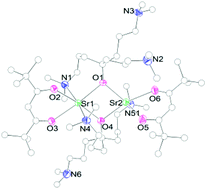
Dalton Trans., 2014,43, 14461-14469
https://doi.org/10.1039/C4DT00689E
Lithium heterocuprates: the influence of the amido group on organoamidocuprate structures
The structural isomers of a number of lithium heteroamidocuprates LiCuR(NR′2) have been studied in the solid state and in solution, with the steric and electronic properties of the amido group (NR′2) shown to significantly influence the solid-state structures and the position of the solution equilibrium.
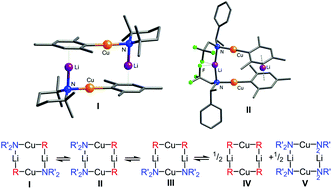
Dalton Trans., 2014,43, 14359-14367
https://doi.org/10.1039/C4DT00965G
Strong intramolecular calcium–π interactions with aryl substituents – requirements and limitations
The formation of strong bonds between calcium ions and neutral π-systems requires preorientation of the aryl groups by a sterically protecting ligand sphere.
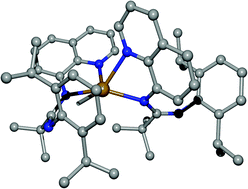
Dalton Trans., 2014,43, 14440-14449
https://doi.org/10.1039/C4DT00949E
Trinuclear alkyl hydrido rare-earth complexes supported by amidopyridinato ligands: synthesis, structures, C–Si bond activation and catalytic activity in ethylene polymerization
[(Ap9MeLu)3(μ2-H)3(μ3-H)2(CH2SiMe3)(thf)2] was synthesized. For Y and Yb C–Si bond activation occurs affording [(Ap9MeLu)3(μ2-H)3(μ3-H)2(CH2SiMe3)(thf)2] and [(Ap9MeLn)3(μ2-H)3(μ3-H)2(CH2SiH2Ph)(thf)2].

Dalton Trans., 2014,43, 14450-14460
https://doi.org/10.1039/C4DT00806E
Synthesis and stability of Li/Cl carbenoids based on bis(iminophosphoryl)methanes
Bis(iminophosphoryl) substituted Li/Cl carbenoids – accessable via different preparation methods – show high thermal stabilities, which however depend on the N-substituent.
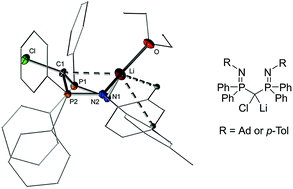
Dalton Trans., 2014,43, 14399-14408
https://doi.org/10.1039/C4DT01466A
Homo- and heteroleptic alkoxycarbene f-element complexes and their reactivity towards acidic N–H and C–H bonds
The reactivity of a series of organometallic rare earth and actinide complexes with hemilabile NHC-ligands towards substrates with acidic C–H and N–H bonds is described.

Dalton Trans., 2014,43, 14346-14358
https://doi.org/10.1039/C4DT01442A
Probing solvent effects on mixed aggregates associating a chiral lithium amide and n-BuLi by NMR: from structure to reactivity
NMR shows a direct correlation between the concentration of a chiral lithium amide/n-BuLi complex and ees of a test reaction.
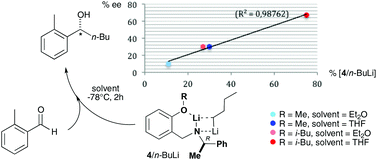
Dalton Trans., 2014,43, 14219-14228
https://doi.org/10.1039/C4DT01156B
Heterometallic aluminates: alkali metals trapped by an aluminium aryloxide claw
In the heterometallic species prepared [AlMMe2{2,6-(MeO)2C6H3O}2]n (M = Li, Na and K), the {AlMe2{(2,6-(MeO)2C6H3O}2}− moiety acts as a claw that grasps alkali metals of very different sizes.
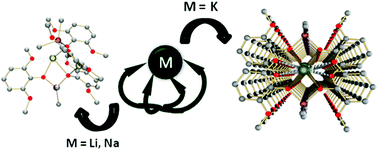
Dalton Trans., 2014,43, 14377-14385
https://doi.org/10.1039/C4DT00952E
Hydrometallation of amino-trialkynylsilanes – intramolecular M–N interactions (M = Al, Ga) and potential activation of Si–N bonds
Hydrometallation of amino-alkynylsilanes afforded highly functionalized alkenyl–alkynylsilanes with a fascinating diversity of intramolecular donor–acceptor interactions.

Dalton Trans., 2014,43, 14386-14398
https://doi.org/10.1039/C4DT00922C
Scandium versus yttrium{amino-alkoxy-bis(phenolate)} complexes for the stereoselective ring-opening polymerization of racemic lactide and β-butyrolactone
5-Coordinate, THF-free scandium complexes are less active but provide a better control than their 6-coordinate, THF-coordinated analogous yttrium complexes for the heteroselective ring-opening polymerization of rac-lactide.

Dalton Trans., 2014,43, 14322-14333
https://doi.org/10.1039/C4DT01206B
Syntheses, structures and flexible coordination of sterically demanding di- and “tri”-lithiated methandiides
Sequential lithiation of a sterically demanding bis(iminophosphoranyl)methane afforded di- and trianionic methandiide lithium complexes and their structures and coordination behaviour have been studied with solid state and solution methods.

Dalton Trans., 2014,43, 14334-14345
https://doi.org/10.1039/C4DT01185F
Heterocyclic substituted methanides as promising alternatives to the ubiquitous nacnac ligand
A series of group 13 complexes containing deprotonated bisheterocyclomethanes have been prepared as well as structurally and spectroscopically characterised.
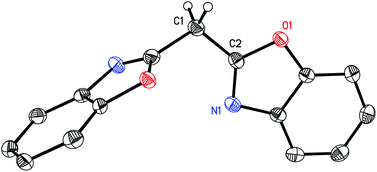
Dalton Trans., 2014,43, 14432-14439
https://doi.org/10.1039/C4DT01008F
New supramolecular assemblies in heterobimetallic chemistry: synthesis of a homologous series of unsolvated alkali-metal zincates
Exhibiting unprecedented supramolecular assemblies, made up exclusively of metal–carbon interactions, the structures of a homologous series of solvent-free alkali-metal zincates have been uncovered.
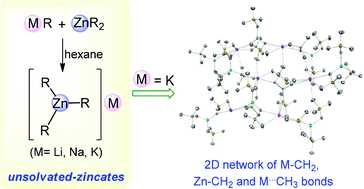
Dalton Trans., 2014,43, 14229-14238
https://doi.org/10.1039/C4DT01131G
Catalytic bond forming reactions promoted by amidinate, guanidinate and phosphaguanidinate compounds of magnesium
Magnesium compounds supported by N,N’-chelating ligands are shown to be active (pre)catalysts for a number of catalytic bond forming reactions.
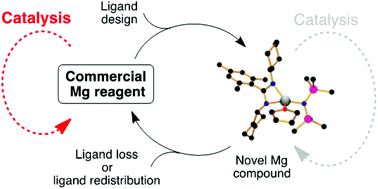
Dalton Trans., 2014,43, 14302-14314
https://doi.org/10.1039/C4DT01097C
Crown ether adducts of light alkali metal triphenylsilyls: synthesis, structure and hydrosilylation catalysis
Alkali metal triphenylsilyls [Li(12-crown-4)SiPh3]·(thf)0.5, [Na(15-crown-5)SiPh3]·(thf)0.5 and [K(18-crown-6)SiPh3(thf)] were synthesized using 1,1,1-trimethyl-2,2,2-triphenyldisilane and shown to catalyze the regioselective hydrosilylation of 1,1-diphenylethene.
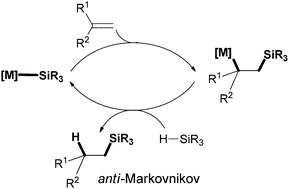
Dalton Trans., 2014,43, 14315-14321
https://doi.org/10.1039/C4DT00916A
Alkali metal salts of ditopic carbanionic carbenes as reagents for the synthesis of novel complexes of group 12 and 14 metals
Reaction of the novel organo-potassium compound [:C[N(2,6-iPr2C6H3)]2(CH)CK(THF)2] (KIPr·2THF) with M[N(SiMe3)2]2 (M = Zn, Sn, Ge, Pb) afforded salts of the anionic three coordinate complexes [M{C(CH)[N(2,6-iPr2C6H3)]2C:}{N(SiMe3)2}2]− (M = Zn (1), Sn (2), Ge (3), Pb (4)).

Dalton Trans., 2014,43, 14239-14248
https://doi.org/10.1039/C4DT00954A
Understanding the directed ortho lithiation of (R)-Ph2P(![[double bond, length as m-dash]](https://www.rsc.org/images/entities/char_e001.gif) NCO2Me)NHCH(Me)Ph. NMR spectroscopic and computational study of the structure of the N-lithiated species
NCO2Me)NHCH(Me)Ph. NMR spectroscopic and computational study of the structure of the N-lithiated species
The multinuclear magnetic resonance and computational study of the structure of N-lithium (R)-Ph2P(![[double bond, length as m-dash]](https://www.rsc.org/images/entities/char_e001.gif) NCO2Me)NHCH(Me)Ph revealed the origin of its diastereoselective ortho lithiation.
NCO2Me)NHCH(Me)Ph revealed the origin of its diastereoselective ortho lithiation.
![Graphical abstract: Understanding the directed ortho lithiation of (R)-Ph2P( [[double bond, length as m-dash]] NCO2Me)NHCH(Me)Ph. NMR spectroscopic and computational study of the structure of the N-lithiated species](/en/Image/Get?imageInfo.ImageType=GA&imageInfo.ImageIdentifier.ManuscriptID=C4DT00927D&imageInfo.ImageIdentifier.Year=2014)
Dalton Trans., 2014,43, 14291-14301
https://doi.org/10.1039/C4DT00927D
Reactivity of the uranium(IV) carbene complex [U(BIPMTMS)(Cl)(μ-Cl)2Li(THF)2] (BIPMTMS = {C(PPh2NSiMe3)2}) towards carbonyl and heteroallene substrates: metallo-Wittig, adduct formation, C–F bond activation, and [2 + 2]-cycloaddition reactions
Reactivity of a uranium(IV)–carbene towards carbonyls and heteroallenes is described.
![Graphical abstract: Reactivity of the uranium(iv) carbene complex [U(BIPMTMS)(Cl)(μ-Cl)2Li(THF)2] (BIPMTMS = {C(PPh2NSiMe3)2}) towards carbonyl and heteroallene substrates: metallo-Wittig, adduct formation, C–F bond activation, and [2 + 2]-cycloaddition reactions](/en/Image/Get?imageInfo.ImageType=GA&imageInfo.ImageIdentifier.ManuscriptID=C4DT00909F&imageInfo.ImageIdentifier.Year=2014)
Dalton Trans., 2014,43, 14275-14283
https://doi.org/10.1039/C4DT00909F
Lithium, sodium and potassium picolyl complexes: syntheses, structures and bonding
A series of alkali metal 2- and 4-picolyl (methylpyridyl) complexes have been prepared and their metal–anion bonding probed in the solid state and solution.
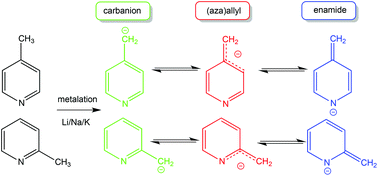
Dalton Trans., 2014,43, 14265-14274
https://doi.org/10.1039/C4DT00808A
Synthesis and thermal decomposition of a pyridylene-bridged bis-β-diketiminate magnesium hydride cluster
Thermal decomposition of a magnesium hydride complex with four Mg2+ and four H− ions leads to H2 elimination and ligand reduction.
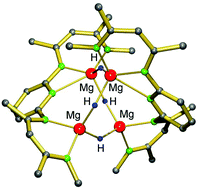
Dalton Trans., 2014,43, 14284-14290
https://doi.org/10.1039/C4DT00835A
Ligand influences on homoleptic Group 12 m-terphenyl complexes
The analysis of three series of two-coordinate Group 12 bis-terphenyl complexes highlights how subtle changes to ligand properties, particularly sterics, and, to a smaller extent, electronics have a large effect on the solid state structures adopted.
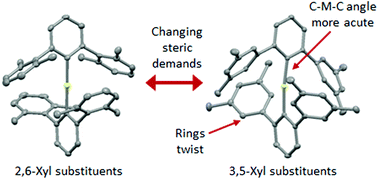
Dalton Trans., 2014,43, 14257-14264
https://doi.org/10.1039/C4DT00647J
Catalytic hydroacetylenation of carbodiimides with homoleptic alkaline earth hexamethyldisilazides
The homoleptic alkaline earth hexamethyldisilazides, [M{N(SiMe3)2}2(THF)2] (M = Mg, Ca, Sr), are shown to be efficient precatalysts for the hydroacetylenation of organic carbodiimides with alkyl- and arylacetylenes.

Dalton Trans., 2014,43, 14249-14256
https://doi.org/10.1039/C3DT53542H
About this collection
Guest edited by Professor Eva Hevia (University of Strathclyde), this themed issue highlights recent developments across the polar organometallic chemistry research landscape.